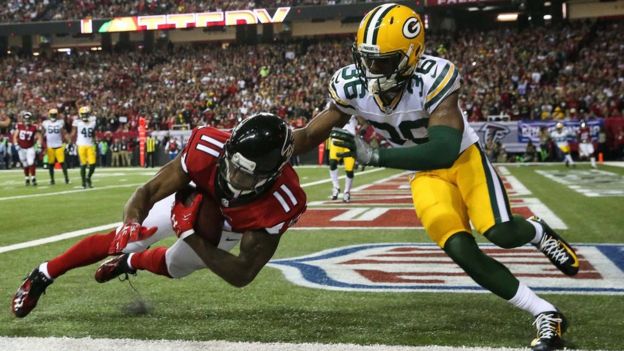Romans on the run, set, hut!
The Roman Empire was the greatest and largest empire for hundreds of years, but it has also been hundreds of years since it last stood. Yet it stands the test of time and has become a topic of legendary status and human achievement. Although the glory has faded, there is still an example of how the Roman Empire has survived in a contemporary setting.
3911 S Figueroa St, Los Angeles, CA 90037. The home of the mighty USC Trojans football team, also known as the Coliseum [sic] (the actual standing ruins is called the Colosseum). USC, along with many other schools across the United States, bear a mascot of some group of people that relate to the ancient world, whether it be the Spartans, Gladiators, Romans, Trojans etc. etc. But I’m not going to talk about schools, I’m going to show how an aspect of the Roman Empire, specifically Roman battles and gladiator arena events, has lived on through the game of football.
 Football is an extremely physical sport that involves a variety of strategy and coordination. It is very much similar to the battles that the Romans fought. What the Romans followed under the general’s orders, the athletes follow under the coach’s calls. Who the hero Spartacus was, many of today’s sports analysts would say is Jerry Rice. The field, even, was called a battlefield, while the field now is called a football field. There is a matter of winning a game, which compares to a victorious battle. In the National Football League (NFL), there is a strife to win the Super Bowl, which is the championship game played after enduring 16 regular season games and several playoff matches. In comparison, the Romans would have to fight many battles and win most of them in order to gain leverage (which would be the playoffs), and then drive out the enemy and win the war, which would be the equivalent of winning a Super Bowl. To extend this idea, if a football team is successful enough to win many Super Bowls, the correlation would be an empire that wins many wars. Therefore, considering the past 20 years of NFL history, which would be 20 seasons meaning 20 wars, the New England Patriots would be the Romans! They both dominated their eras, respectively.
Football is an extremely physical sport that involves a variety of strategy and coordination. It is very much similar to the battles that the Romans fought. What the Romans followed under the general’s orders, the athletes follow under the coach’s calls. Who the hero Spartacus was, many of today’s sports analysts would say is Jerry Rice. The field, even, was called a battlefield, while the field now is called a football field. There is a matter of winning a game, which compares to a victorious battle. In the National Football League (NFL), there is a strife to win the Super Bowl, which is the championship game played after enduring 16 regular season games and several playoff matches. In comparison, the Romans would have to fight many battles and win most of them in order to gain leverage (which would be the playoffs), and then drive out the enemy and win the war, which would be the equivalent of winning a Super Bowl. To extend this idea, if a football team is successful enough to win many Super Bowls, the correlation would be an empire that wins many wars. Therefore, considering the past 20 years of NFL history, which would be 20 seasons meaning 20 wars, the New England Patriots would be the Romans! They both dominated their eras, respectively.
Now, in terms of a game or sport, the arena battles match up with the 60 minutes of regulation of a football game almost identically, and the differences are basically negligent. In the analysis done by Jesse Hicks of Penn State, “both involve spectacular, violent displays before a massive, cheering audience. Fans choose sides and strongly identify with their team—just as Roman citizens cheered their favorite gladiators in combat” (Hicks). And, minus the weapons and killing, the gladiators were basically the classic version of football stars. As stated by Professor Russell Fleming of the University of St. Andrews, “just as the gladiators wore armour to protect their bodies, many sports today require the players to wear protective gear, [such as football]” (Fleming). In addition, the fighting spirit that the Romans valued and acted upon in battle is shown in the teamwork of football teams today. There is also the saying in football that “we fight as a team”, which kind of sounds like..what the Romans did.
classic version of football stars. As stated by Professor Russell Fleming of the University of St. Andrews, “just as the gladiators wore armour to protect their bodies, many sports today require the players to wear protective gear, [such as football]” (Fleming). In addition, the fighting spirit that the Romans valued and acted upon in battle is shown in the teamwork of football teams today. There is also the saying in football that “we fight as a team”, which kind of sounds like..what the Romans did.
There is a conceptual piece to fit together here. Although there are differences in the way these activities function in a society; for example, in a Roman society, the art of war is seen as its primary source of security and longevity, while the gladiator events are seen as a way of telling a story and partaking in delusional enjoyment of violence. Or, in America’s society, football is a way of life that brings people together, or brings people together to watch it. Despite this, the conceptual correlation between the Roman Empire and its physical spectacles and the United States today with the game of football is the idea that the largest and most powerful empires of their respective time are entreated the luxury of showing physical dominance as a means of entertainment or in such profusion that it is deemed a part of its culture. It is a demonstration of pride, glory and strength. This is beneficial in that there is a sense of unity and power that corrals the people of the empire together, but the downside is that such a mentality attributes to the unjust killing of human lives or just the danger of the sports in general.
There is no refuting that part of the Roman Empire still lives on today through football. The sport we value here in America is an imitation of Roman battles and arena events, minus the killing. Plus, I have only given a sample size of the comparisons between the two and what it tells us about their “empire mentality”, so one can only imagine how revelating and intertwined time can be when it comes to Roman warriors and football.
Works Cited
“12 Things You Should Know About The Ancient Roman Gladiators.” Realm of History, 15 July 2016, http://www.realmofhistory.com/2016/07/15/12-facts-ancient-roman-gladiators/. Accessed 27 Oct. 2017.
Fleming, Russell. “Roman Gladiators: How They Compare to Modern Sporting Heroes.” AntiquityNOW, 7 Oct. 2014, antiquitynow.org/2014/10/02/roman-gladiators-how-they-compare-to-modern-sporting-heroes/. Accessed 27 Oct. 2017.
Google Images.
Hicks, Jesse. “Probing Question: Is Football Similar to Roman Gladiator Games?” Penn State University, 14 Sept. 2009, news.psu.edu/story/141233/2009/09/14/research/probing-question-football-similar-roman-gladiator-games. Accessed 27 Oct. 2017.
“Super Bowl 51: A Beginner’s Guide to American Football – CBBC Newsround.” BBC News, BBC, 2 Feb. 2017, http://www.bbc.co.uk/newsround/31082306. Accessed 27 Oct. 2017.

Your comparison of football and ancient gladiator fights is very intriguing and I can definitely see where the similarities are. I’m curious to know what comparisons you could draw to other Roman sports besides the gladiator battles such as the fights against animals and the chariot races. I feel that the comparison to Roman sports does not draw the line at football.
LikeLike
Indeed my comparison is marginal and doesn’t grasp a great breadth of Roman sports. There were many such as discus throwing, wrestling, and handball, though I found them a bit of a stretch when comparing them to modern American football.
LikeLike
Hi Chapman,
I found your comparison between football and the fights of the ancient Roman empire both amusing and interesting. I agree with Sarah — it would be interesting to delve farther into that comparison and see which other Roman sports parallel to ones that we have today. Your use of multi-modality throughout this blog post greatly added to it, especially being able to compare directly between the image of ancient Roman games and the more modern photo from the Packers game. Though your subject matter doesn’t directly connect to any specific text, I do think that it connected well to the general topics about which we have been learning — knowledge Roman civilization itself is integral to understanding its later demise (and ruins). I would’ve enjoyed more of a detailed explanation as to your comparison between Spartacus and Jerry Rice, but purely for entertainment purposes. Your argument was very well thought-out, organized, and explained, and your use of textual evidence from your multiple sources was very successful. Honestly, a really interesting read.
Best,
Nicki
LikeLike
My blog may be limited in scope and does not relate to a specific text, though I am glad my comparison was clear. I merely wanted to provide a savvy correlation between the two sports. And concerning Spartacus and Jerry: Spartacus was deemed the greatest Roman gladiator in history, while Jerry Rice is seen as the “GOAT” (greatest of all time) in NFL history, and they have both left an indisputable legacy.
LikeLiked by 1 person
Chapman,
This was a pretty light and entertaining read. However, I find your comparison to be fairly surface-level. It would be interesting to discuss why both ancient Rome and modern America enjoy the spectacle of physicality. What does this say about the people of these societies? What are both the positive and negative aspects of such entertainment?
At any rate, this is a nice post and I can tell you’ were very passionate about the subject matter.
– Colin
LikeLike